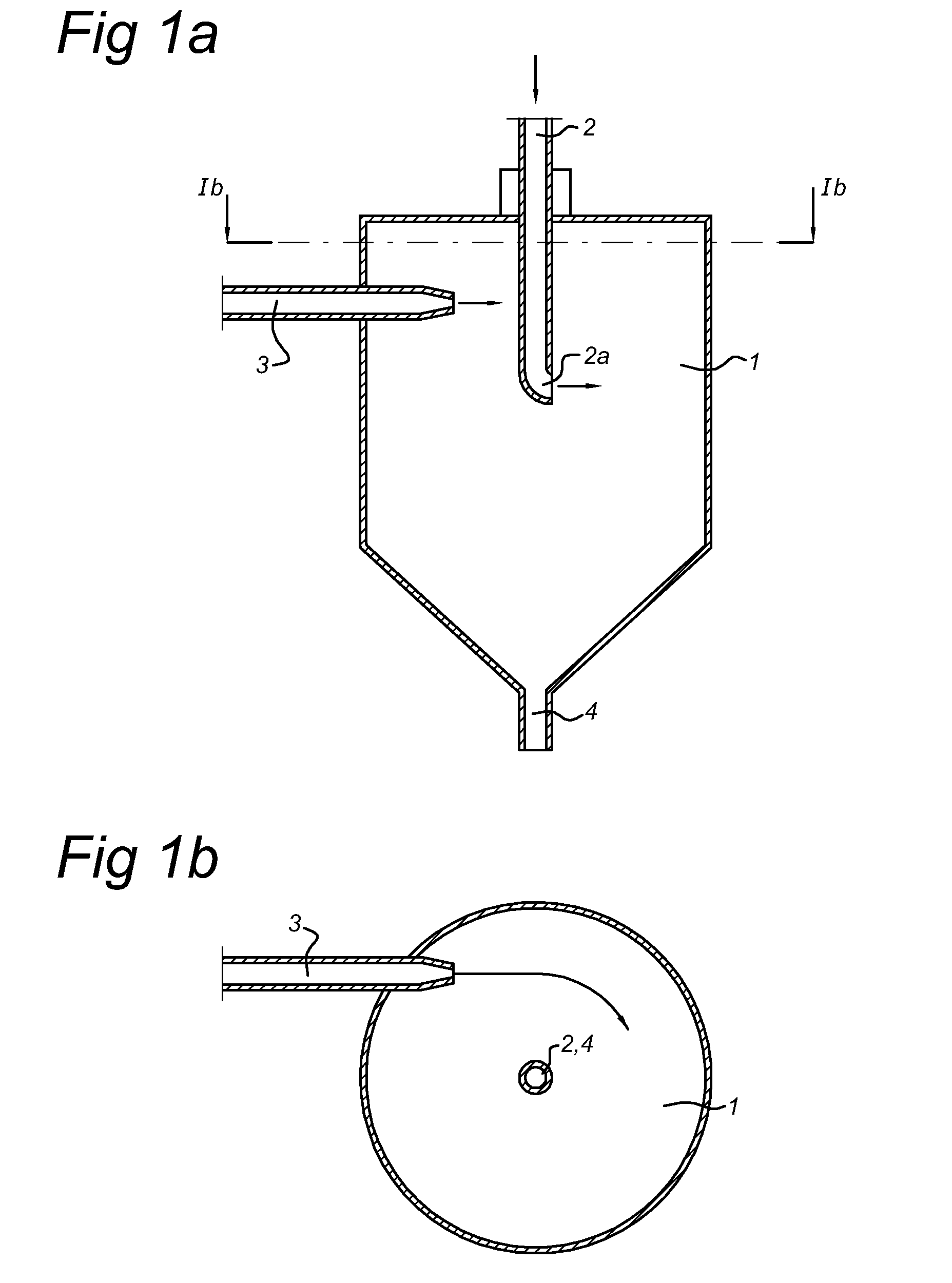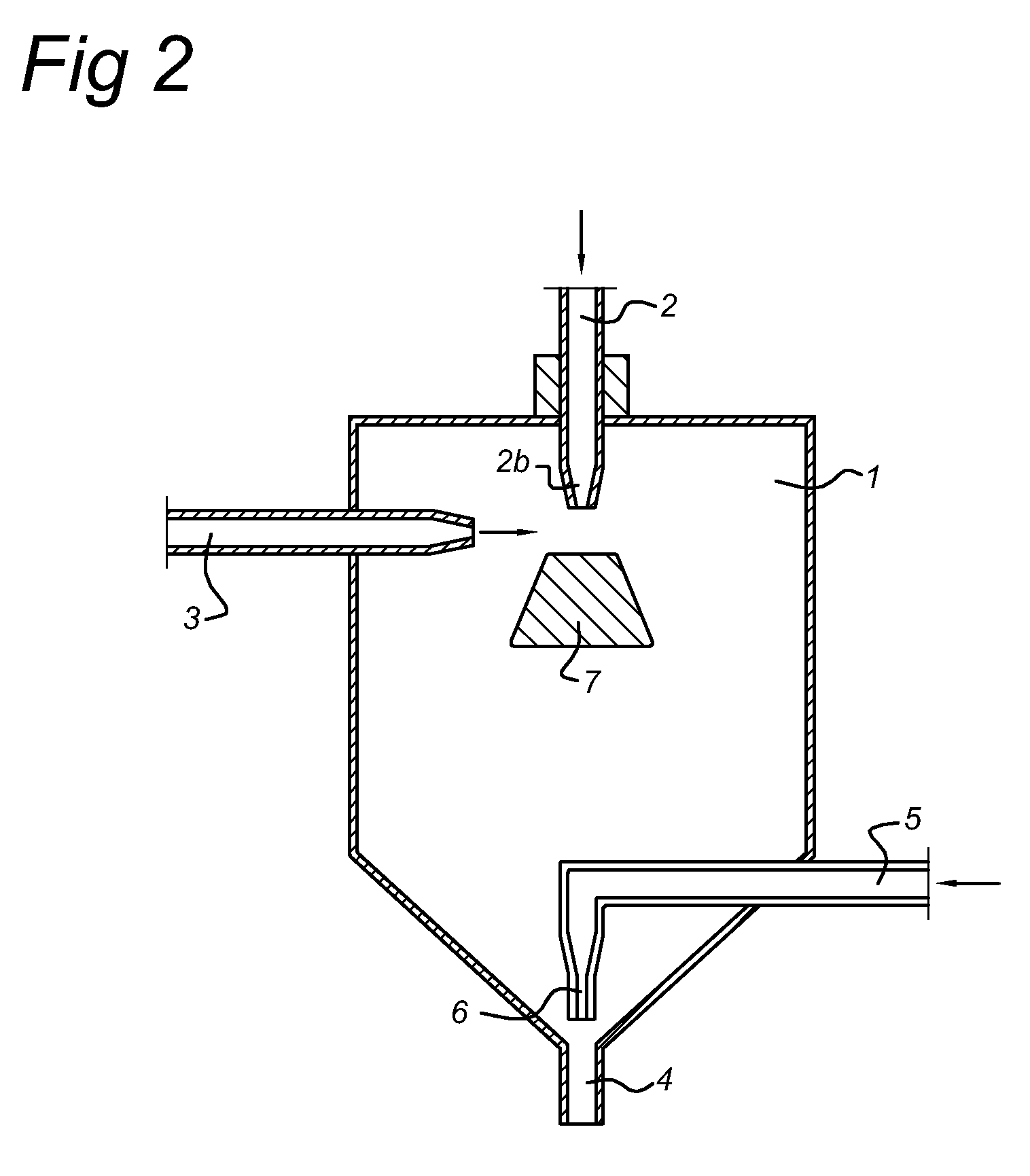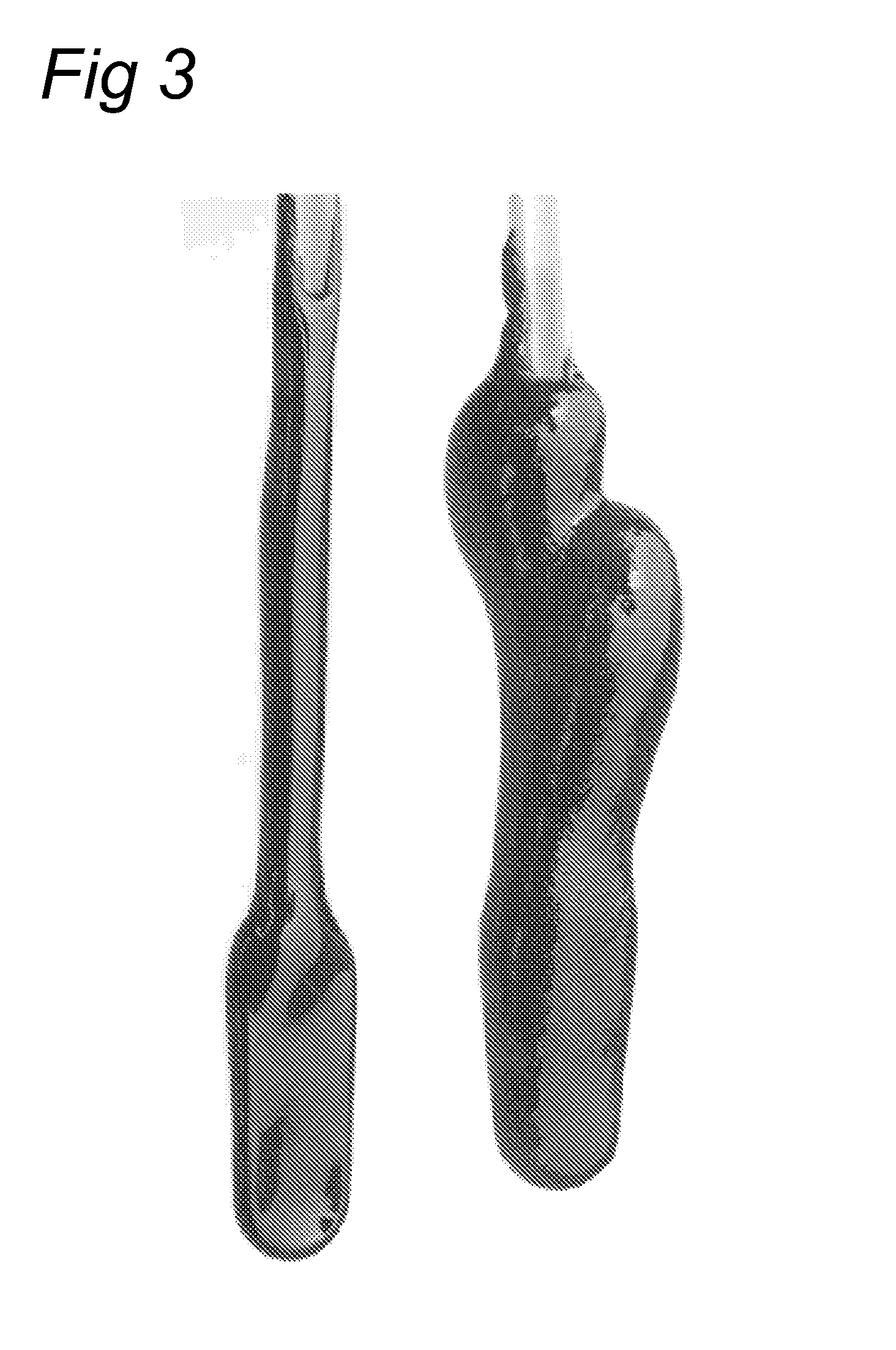Stable bitumen foam and its preparation and use
a bitumen foam and stable technology, applied in the field of stable bitumen foam, can solve the problems of only a limited standing time left, impossible to achieve a ratio of foam:bitumen more than 4:1, and the temperature limit is very limited
- Summary
- Abstract
- Description
- Claims
- Application Information
AI Technical Summary
Benefits of technology
Problems solved by technology
Method used
Image
Examples
example 1
[0072]Bitumen (type Venezuelan; penetration value 150-200 dmm) with a viscosity of 30.000 mPas (measured at 60° C. according to EN 12596), to which 0.05% of a polyperfluoroether stearate surfactant (Fluor N 2592, Cytonics, Beltsville, Md., USA) was added, was subjected to shearing forces at approx. 8.000 rpm in a high-shear mixer (brand Kinematica) at a temperature of 110° C., so that a vortex was provided. The viscosity associated with this temperature, also measured according to EN 12596, was approximately 3200 mPas. As a consequence of the high shearing forces air was dispersed into the bitumen as fine gas bells.
[0073]After a period of 30-60 seconds bitumen foam was obtained with a volume increase of 27% as compared to the original bitumen brought into the mixing chamber.
[0074]The bitumen foam had a half-life time according to ASTM D 5 at 25° C. of 150 minutes during the natural cooling down process.
example 2
[0075]Bitumen (type Venezuelan; penetration value 150-200 dmm) with a viscosity of 30.000 mPas (measured at 60° C. according to EN 12596), to which 0.05% of a polyperfluoroether stearate surfactant (Fluor N 2592, Cytonics, Beltsville, Md., USA) was added, was brought into a conical mixing chamber with a velocity of 60 kg per minute, a pressure of 2 atmosphere and a temperature of 110° C. whereby the opening of the supply pipe was located on the bottom. The viscosity associated with this temperature, also measured according to EN 12596, was approximately 3200 mPas.
[0076]A first air stream was brought into the mixing chamber (ambient temperature, 2 bar and approx. 20 liter per minute) tangentially using a spray nozzle.
[0077]Further downstream a second air stream was introduced using a Venturi-tube with a speed of approx 50 liter per minute via slot nozzle.
[0078]Immediately after the outflow bitumen foam was obtained with a volume increase of 30% as compared to the original bitumen tha...
PUM
| Property | Measurement | Unit |
|---|---|---|
| temperature | aaaaa | aaaaa |
| temperature | aaaaa | aaaaa |
| size | aaaaa | aaaaa |
Abstract
Description
Claims
Application Information
 Login to View More
Login to View More - R&D
- Intellectual Property
- Life Sciences
- Materials
- Tech Scout
- Unparalleled Data Quality
- Higher Quality Content
- 60% Fewer Hallucinations
Browse by: Latest US Patents, China's latest patents, Technical Efficacy Thesaurus, Application Domain, Technology Topic, Popular Technical Reports.
© 2025 PatSnap. All rights reserved.Legal|Privacy policy|Modern Slavery Act Transparency Statement|Sitemap|About US| Contact US: help@patsnap.com



